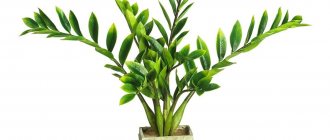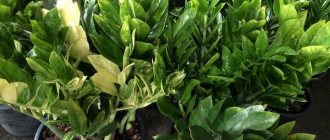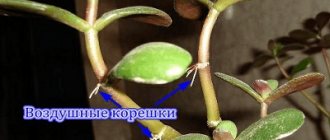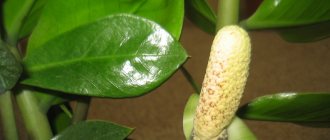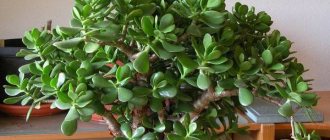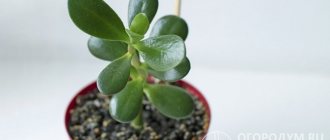How to propagate a dollar tree at home
The dollar tree, also known by its scientific name Zamioculcas, is a tropical African plant. Thanks to its original appearance: fleshy green leaves, strong stems, it has long won the sympathy of flower lovers around the world and is grown as a houseplant. Recently, the culture has become especially popular - it turned out that, according to the Eastern philosophy of Feng Shui, zamioculcas brings wealth and financial well-being to the house. Since wealth is mainly associated with dollars, this is where the flower's popular name - dollar tree - came from. Due to the popularity of Zamioculcas, the question of how to propagate a dollar tree at home becomes relevant.
Looking at a flower from the side
The dollar tree is a neat bush with original leaves, which are covered with a thin layer of waxy coating and consist of 8 or 12 separately growing feathers. Each specimen has a fleshy structure in which moisture accumulates in case of dry periods. The tuberous rhizome also retains water in a similar way. It is often called a natural reservoir of moisture for a rainy day.
The dollar tree can grow up to a meter in height and decorate any home interior. Unlike the money tree (crassula), it periodically blooms with an unusual inflorescence. When you look at the flower from the side, it seems that a yellow or cream-colored corncob has appeared among the fleshy leaves.
In fact, this standing bud consists of many miniature flowers that shine brightly in the afternoon sun. Usually the inflorescence is hidden under a light green blanket, so it is not immediately noticeable. The photo clearly shows the dollar tree during its flowering period.
Since the plant originated from the tropics, it is quite rare to see its buds in Europe. However, the flower is prized for its attractive foliage.
The plant was first described in 1828 by the famous collector of tropical flora K. Loddiges. He named it Caladium zamyefolia. 28 years later, Heinrich Schott, an Austrian biologist, included it in the list of tropical plants as Zamioculcas Loddiges. Only in 1908 did the director of the botanical garden in Berlin immortalize his modern name. Despite this, many indoor plant lovers know the flower under the name dollar tree.
Since the plant blooms very rarely, its leaves are considered its main advantage. It grows up to 100 cm and above, when suitable conditions are created. How to achieve this result when caring for a flower? It turns out it's not difficult. The main thing is to follow simple tips.
Since Zamioculcas is considered a poisonous plant, replanting or pruning is performed with gloves. Otherwise, getting the juice on exposed skin leads to unpleasant burns that take a long time to heal.
How to propagate Zamioculcas
The dollar tree, thanks to its attractive appearance throughout the whole year, as well as its ease of care, often lives in homes and offices, and is given as a symbolic gift for happiness and good luck. And although the plant blooms very rarely, and the white or pale pink flower is rather inconspicuous, this is compensated by the lush green foliage. In suitable conditions, Zamioculcas grows over a meter and can be used as a garden plant in the summer.
The only drawback of the culture is its slow growth - first the zamioculcas forms roots, and only then the green mass.
Important! Zamioculcas loves warmth and sun, but it is better to avoid direct sunlight. The plant accumulates moisture well, so it does not need frequent watering - the root system may rot, but it responds well to spraying the leaves.
You can buy a ready-made zamioculcas seedling in a pot at a flower shop, but it is quite expensive. In addition, a purchased Dutch flower, when placed in a normal home environment, without treatment with special preparations and growth activators, can stop growing and take a long time to adapt. Having studied the nuances of how a dollar tree reproduces at home, it becomes possible to grow a healthy, strong sprout, already adapted to a specific environment.
Zamioculcas can be propagated by cuttings or dividing the tuber. The choice of method depends on the condition of the flower. An adult plant requiring replanting must be divided. It is better to separate the stem or leaf of a young tree - this way the zamioculcas is subject to minimal damage.
Cuttings
Zamioculcas propagation by cuttings is a rather painstaking process, but if you approach it with care and patience, even novice gardeners can do it correctly. Cuttings involve selecting a shoot and dividing it into several roots.
Step-by-step instruction:
- How to take a shoot. An adult stem (leaf blade) is selected, on which several buds are formed. Cut with a sharp knife at an angle. The larger the shoot, the easier it will take root - it has a fairly large supply of nutrients. The stem is divided into several pieces - cuttings.
Important! It is necessary to ensure that each root has at least one bud or leaf. There may be a few leaves left on the top.
- How to root zamioculcas with a stem. It is recommended to treat the cut on the tree and the formed cuttings with activated carbon - this eliminates the risk of infection of the plant and it recovers faster.
Advice. Do not immediately place the root in the ground - the process of decay may begin. The cuttings are laid out on paper and dried - this is how a cork layer is formed and the sap channels are closed.
Prepared cuttings must be planted in a container with soil. The bottom is lined with drainage - fine gravel or expanded clay, and soil is poured on top. You can use a ready-made soil mixture for cacti or prepare the soil yourself. To do this, you need to mix peat, sand and fertile garden soil. A special substrate, vermiculite or peat mixed with perlite, is also suitable.
The soil is well moistened, and cuttings are planted (they must be deepened to the level of the first bud and the soil must be lightly compacted).
How to propagate with a branch in water. Another recipe for growing a dollar tree from a cutting is to take a whole branch or roots and place them in water until the first roots appear. You should not be upset if the roots of zamioculcas do not appear for a long time - this process can last more than a month. To prevent the root from rotting, activated carbon is added to the water.
Growing
If you purchased Zamioculcas at a flower shop, do not rush to replant it immediately. He must adapt to the new room. Feed him, he prefers fertilizers for succulents.
Place the flower in comfortable conditions. This plant does not like drafts or cold, like any tropical resident. There should be enough light, but not direct sunlight.
And don’t rush to immediately give to drink , especially after the purchase. You shouldn’t water it for at least a week. If you care for Zamioculcas correctly, you will be able to grow a lush bush with glossy dark green leaves.
You can grow such beauty practically “from scratch” yourself from the leaf blades of a flower (this method was described above). To do this, be patient and your efforts will be rewarded.
Sprinkle the cut leaves (it is better to cut the leaf blades obliquely) with activated carbon, dry them and plant them in seedling pots in sand and peat soil. The soil needs to be pressed down so that it fits tightly to the sheet.
To obtain faster rooting of the leaves, cover them with a glass jar. After 1-2 months, check the bases of the leaves, white nodules (some leaves may dry out, but there is nothing wrong with that, the leaf has simply given all its strength to forming a tuber).
If the nodules have formed, the leaves can be planted in a pot, several at a time, this will allow you to grow a lush plant.
Reproduction of Zamioculcas is a fairly simple process. You just need to remember that the plant is toxic , so all propagation and planting procedures must be carried out with gloves. Growing Zamioculcas takes a long time, new shoots and leaves appear every 5-6 months, but with good and proper care and conditions comfortable for the flower, this can happen much more often.
How to divide Zamioculcas
If the dollar tree has reached a large size and requires replanting, there is most likely no better way to divide the zamioculcas. The correct time to transplant a plant is the moment of intensive development of tubers. The roots of the flower are powerful, and if they do not fit in the pot, they can tear it apart. When the container becomes too small for the tree, it needs to be replanted or divided.
There is nothing difficult about how to divide zamioculcas when transplanting. The plant is carefully removed from the pot along with the soil. If the roots damage the container, it is better to simply break it.
The roots are carefully unraveled and the pagons are separated.
The resulting sprouts are placed in separate containers with drainage and soil similar in composition to the previous one. It is recommended to choose a ceramic or clay pot, widened at the top.
Advice. Special attention should be paid to the size of the container - it should not be much larger than the root system of the plant. Otherwise, the flower will not grow until the roots fill the pot.
The best time to propagate and replant a dollar tree is spring.
Attention! When working with zamioculcas, you must be very careful and careful and use gloves. The juice of this plant is poisonous; if it gets on exposed skin, it can cause an allergic reaction or inflammation.
The dollar tree is a symbol of success and prosperity. This beautiful and unpretentious plant can embellish and enliven the atmosphere in the home and office. Having learned some of the tricks of propagating this original plant, you can easily grow zamioculcas yourself.
Reproduction
You can propagate a dollar tree in several ways:
- dividing the bush;
- cuttings;
- propagation by leaf blade.
When cuttings, the first root will appear after 1–2 months, and a full-fledged plant can be obtained after 7–8 months.
How to plant zamioculcas using the method of dividing a bush? First of all, the roots are carefully separated from each other, and then each part is planted in the ground as an independent plant and watered very sparingly.
Leaf propagation is the simplest and most accessible method, however, a full-fledged plant will form only after 6–7 months. Each of these methods has its own advantages. Let's take a closer look at them.
Cuttings
The most popular way to get a mini dollar tree specimen. To do this, you only need a good cutting from a mature plant and suitable soil: steamed substrate without humus, fine sand, sphagnum or coconut fiber. You also need to prepare small pots for seedlings or ordinary plastic cups. The main thing is that there are holes in the container to drain the liquid.
However, you need to remember that zamioculcas leaves germinate very slowly: the tuber and roots form in 2–3 months, and you will have to wait up to six months for the first leaves.
The procedure is as follows:
- Cut the zamioculcas leaf at the base and use a sharp knife to carefully divide it into cuttings along the internodes. The correct cutting has 1–2 leaves and a whole leaf node.
- Treat the cut parts with a slurry of activated carbon and water and dry.
- After drying, plant the cuttings in the ground with the bottom of the leaf node.
- Watering is not required for the first two days, then moderate soil moisture is recommended. Along with watering, it is necessary to spray the cuttings with water.
Dollar tree cuttings can be rooted not only in soil, but also in water. In this case, it is much easier to control the rooting process.
- A cutting 7–10 cm in length is cut from the top of the leaf and cleared of the lower leaves, leaving 2–3 at the top.
- The future tree is immersed in a transparent container and filled halfway with water. It is necessary to maintain the fluid level and add it from time to time.
- The roots are fully formed in 2–3 months, after which the plant is transplanted into the ground.
How to grow Zamioculcas from a leaf
Only healthy, large and well-developed leaf blades of adult plants are suitable for propagating a dollar tree using leaves: they contain a sufficient amount of nutrients that allow the new plant to take root and take root.
To propagate Zamioculcas with leaves, follow our instructions:
- Cut off the leaf blade with a sharp knife.
- Treat it with Kornevin or any similar substance that stimulates root formation. Dry the sheet for 2-3 hours.
- Bury the plant 1/3 of the way into moist, loose soil.
- Water regularly but sparingly. It is important not to allow the soil to dry out or stagnate water.
The average period for the formation of the root system is 2 months.
By dividing the tuber
This is the fastest way to propagate zamioculcas, but you should carefully select the material for transplantation: only fully formed specimens with several new growth points on the surface of the earth are suitable.
To successfully divide a plant, you need:
- Carefully and carefully remove the plant from the pot and shake off the roots from the ground.
- Identify parts of the plant that can be separated. They must have their own tuber, roots and a rosette with several leaves.
- Using a sharp knife, divide the root system, trying to make as few unnecessary movements as possible.
- Treat the sections with activated carbon and leave to dry.
- Then plant new plants in separate containers and water.
What planting material can be used?
The main criterion by which material for breeding is selected is health.
There must be good leaves:
- even and smooth;
- evenly colored;
- no damage, stains;
- no pests.
When cutting a leaf for propagation, try to capture a small part of the petiole.
Attention! The color requirement becomes optional if you plan to breed variegated, i.e. variegated, a variety of dollar tree.
Next you can see what the planting material for propagating a dollar tree looks like.
How to propagate a flower with a leaf: step-by-step procedure
Leaves can be rooted in two ways.
In water
When rooting a flower in this way, keep in mind that the “mortality” of planting material can be high. It’s better to play it safe and take several leaves for breeding at once.
You will need:
- mother plant;
- sharp knife;
- root formation stimulator;
- container with water.
Sequencing:
- Select a leaf and cut it from the mother plant.
- Treat the cut with a root growth stimulator.
- Place in a transparent container with boiled water at room temperature (it should not cover the leaf by more than 1/3).
Trimming
Pruning is not a prerequisite for proper plant care. It is carried out only to give it a certain shape or rejuvenation. You can trim any part of the plant: tuber, leaves, cuttings. The main thing is that the pruning tool is very sharp and sterile. A scalpel, garden pruning shears, and a sharp knife will do.
Also read: Purslane. Features of care and cultivation in open ground
The cut area must be sprinkled with crushed activated carbon. This will quickly stop the leakage and block access to the “wound” for pathogenic microorganisms. Often pruning is used to treat the currency tree.
Features of caring for seedlings
Necessary conditions for successful rooting:
- comfortable temperature – not lower than +20 degrees;
- periodic ventilation if your leaf takes root in a “greenhouse”;
- moderate watering;
- periodic fertilizing with fertilizers and rooting preparations.
In general, zamioculcas seedlings follow the same care rules as adult plants.
Important! The dollar tree needs to grow in a slightly cramped pot, so don't rush to replant it immediately after the first shoot appears.
The successful rooting of zamioculcas is indicated by the appearance of new leaves . They come out of the ground twisted into a tube and later open up. After the plant has acquired its first leaves, the leaf that gave it life may turn yellow and dry out; this is a normal phenomenon. With patience and accuracy, you can easily get a full-fledged zamioculcas from a leaf.
Signs associated with the flower
Zamioculcas, along with plants such as Crassula, is considered a money flower. A dollar tree bursting with health brings financial well-being to the home. To do this, according to Feng Shui, it is recommended to place the plant in an apartment where the windows face southeast.
Some signs associated with the dollar tree:
- Suddenly a new segment of rakhis has appeared - expect a small monetary profit.
- The leaves turn yellow and fall off - a warning about a deterioration in your financial situation.
- The plant has bloomed - an unmarried girl will soon meet her betrothed.
Despite the fact that zamioculcas has undeservedly received a reputation as a flower of celibacy, many unmarried people grow it and successfully build their personal lives. There are many signs and superstitions associated with the dollar tree. To believe in them or not is everyone’s business.
Sources
- https://glav-dacha.ru/dollarovoe-derevo/
- https://zen.yandex.ru/media/iogorod/dollarovoe-derevo-cvetenie-zamiokulkasa-uhod-v-domashnih-usloviiah-5e5620de67bb927569fbb851
- https://votinteresno.ru/dollarovoe-derevo-ukhod-v-domashnikh-usloviyakh/
- https://ogorod365.com/zamiokulkas-dollarovoe-derevo-vyrashhivanie-i-uhod-v-domashnih-usloviyah/
- https://hoznauka.ru/rasteniya/dollarovoe-derevo.html
- https://www.botanichka.ru/article/10-pravil-vyirashhivaniya-zamiokulkasa-v-domashnih-usloviyah/
- https://glav-dacha.ru/ukhod-za-zamiokulkasom-v-domashnikh-usloviyakh/
- https://sadovnikam.ru/442329a-dollarovoe-derevo-foto-kak-tsvetet-opisanie-i-uhod-v-domashnih-usloviyah
- https://CvetnikInfo.ru/komnatnye-tsvety/pravila-uhoda-za-zamiokulkas-v-domashnih-usloviyah.html
- https://moyasotka.com/tsvety/komnatnye/zamiokulkas/dollarovoe-derevo-uhod-v-domashnih-usloviyah.html
- https://babushkinadacha.ru/cvety/zamiokulykas.html
- https://pocvetam.ru/komnatnye-rasteniya/dekorativno-listvennye/zamiokulkas-peresadka.html
- https://krrot.net/zamiokylkas-v-domashnix-ysloviyax/
- https://stroy-podskazka.ru/zamiokulkas/opisanie/
- https://RoomFlower.ru/komnatnye-tsvety/sukkulenty/kak-cvetet-zamiokulkas.html
- https://pocvetam.ru/komnatnye-rasteniya/dekorativno-listvennye/dollarovoe-derevo-zamiokulkas.html
- https://vashcvetok.ru/rasteniya/dekorativno-listvennye/zamiokulkas-uhod
[collapse]
dollar tree
Discovered in the tropical forests of Africa, the beautiful Zamioculcas attracted the attention of botanists with its succulent, fleshy leaves. In recent years, it has become very popular, especially after it became known that according to Feng Shui, this flower brings good luck and financial well-being to its owners. Then it was quickly nicknamed the dollar tree and began to be given as gifts for birthdays, holidays, and to decorate offices. In addition, Zamioculcas, which is a succulent, is very unpretentious and gets along well with even the laziest owners.
With good care it grows well, reaching a height of a meter or more. It blooms quite rarely, and its light pink or light yellow spadix is not particularly decorative. But the fleshy dark green leaves can delight you all year round. The chairman of the Moscow Flower Growers club, a collector of ornamental flowering plants, Tatyana Zhashkova, told us about the features of this plant.
Why is it called the “flower of celibacy”, can it be kept at home?
Simple and beautiful
Another interesting question is why Zamioculcas is called the flower of celibacy.
In general, this is nothing more than superstition. Today it is difficult to say where exactly it came from. But for a long time, some people believed that in a house where zamioculcas grows, women will not find happiness - they certainly will not get married.
However, over time this point of view changed. Later, a version appeared that if the flower was given as a gift, then the negative effect is lost and female happiness becomes quite possible.
And when Feng Shui began to gain popularity, it turned out that this bushy indoor flower, according to signs, brings prosperity. That's why they began to call it the dollar tree. So, even if the dollars do not grow on it, it has become quite fashionable to give it as a gift.
In addition, the flower perfectly purifies the air and saturates it with oxygen. If we put aside prejudices, this plant is very useful.
For reference! According to modern superstitions, if a flower dries up and sheds its leaves, it means that soon the financial situation in the family or company (depending on where the zamioculcas grows - in the house or office) will worsen.
How to care for a dollar tree
The root of Zamioculcas is tuberous, capable of storing water well, so it can easily tolerate underwatering and drought. Lives quietly without watering for up to two weeks. You can safely leave it when going on vacation or leaving the office for a long vacation.
But he doesn’t like overflow. If the water sits in the pan, the tuber root may rot. Therefore, drainage and moderate watering are very important. It is necessary to water only when the top layer of soil dries very well.
Zamioculcas does not like low temperatures. Prefers good lighting and an air temperature of at least 18 degrees. But in winter it goes into hibernation and it is better if at this time the temperature is no higher than 16 degrees Celsius. Winters well on an insulated balcony. Moreover, at low temperatures the plant does not need not only feeding, but also regular watering.
Does not tolerate direct sunlight, which can cause leaf burn. In summer it also lives well on a glassed-in loggia, provided that the sun does not shine directly on the balcony. The optimal temperature for good development and flowering of zamioculcas is + 25 degrees.
Loves humidity very much. Therefore, you need to spray the dollar tree every day. It’s even better if it is in a room where there is a humidifier. This is especially true in winter, when the plant stands above a heating radiator.
Diseases and pests
Zamioculcas is susceptible to attacks by the following insects:
- scale insect;
- aphid;
- spider mite;
- mealybugs;
- thrips.
Having discovered parasites, you should review the care: watering regime, adjust the humidity and temperature in the room where the tree is grown. As a preventative measure, it is necessary to frequently inspect the plant, and at the first sign of an insect attack, use specialized preparations.
Zamioculcas is susceptible to some diseases, including root rot, the appearance of dark spots, and yellowing of leaves. The causes of diseases also lie in improper care.
When and how to replant a dollar tree
If you buy a dollar tree in a store or borrow it from a friend, the plant must adapt to new conditions. Therefore, if you see that the pot is clearly small and replanting is inevitable, wait at least a week or two weeks so that the flower gets used to it.
The roots of Zamioculcas are strong and powerful; they can easily break a plastic container, so it is better to replant it in a ceramic or clay container. The pot should be slightly larger than the previous one. Be sure to put drainage at the bottom. The soil is either universal or for succulents. It is better to add fine expanded clay to the universal soil to make it more breathable.
Transplantation must be carried out using the transshipment method, planting the plant in a new pot along with an old lump of earth. But make sure that the upper tubers are slightly exposed, about a centimeter.
IMPORTANT! Dollar tree sap is poisonous and can cause skin burns, so use rubber gloves when replanting it.
Mistakes that can be made
- The most common mistake that will lead to damage to Zamioculcas and the proliferation of pests is excessive watering;
- Zamioculcas also needs constant sunlight;
- It is better for the gardener to plant the crop, otherwise the main plant may be ruined and new shoots may not be obtained.
Zamioculcas is rarely exposed to pests, and diseases are even less common. This arises directly from illiterate care, or more precisely, from abundant enrichment with moisture. This causes the root system to rot. The remaining roots are separated from the rotten parts and sprinkled with activated carbon.
Yellow foliage indicates the presence of pests. The bad parts are cleared away until new greenery begins to grow. The appearance of yellow leaves can be caused by:
- Temperature changes;
- Through flow of cold air;
- Poor quality watering;
- Fungal infection.
Popular: What to do when rehabilitating the roots of a cactus when rotting
Yellow foliage on a plant may also appear for seasonal reasons. Most often this happens due to the active growth of young shoots. Therefore, if yellow leaves appear on old branches, but new shoots are growing at the same time, you should not worry.
